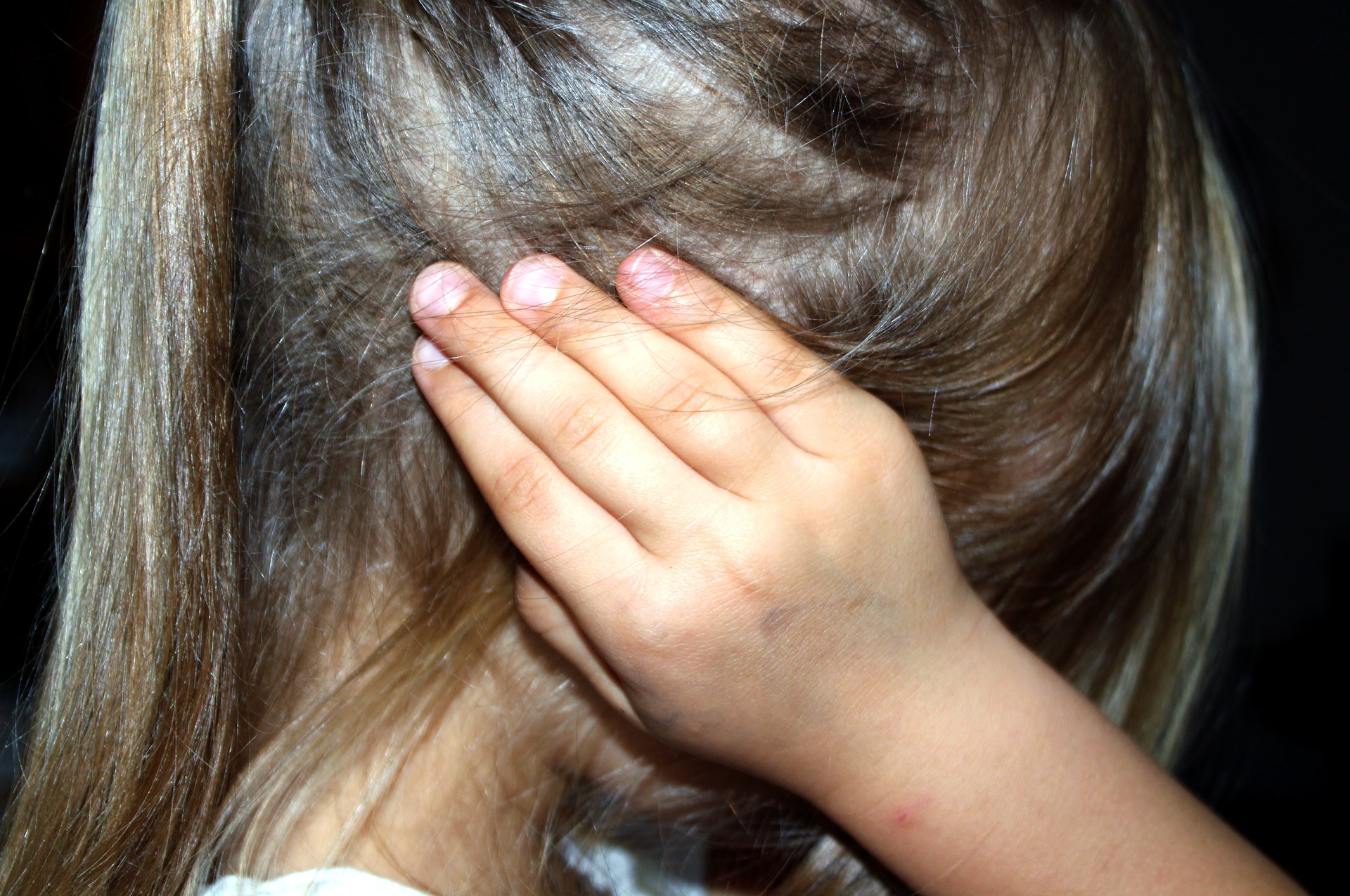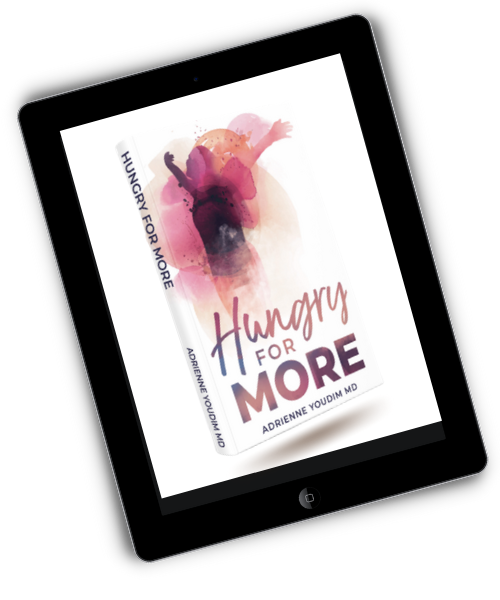This week on Health Bite, we talked about traumatic events and the link to our health.
Traumatic Events and the Link to Our Health: The Story of June and Dr. Felitti’s Study
Today, we are going to draw off the chapter “Hungry to Heal”. For those of you who have read the book Hungry for More: Stories and Science to Inspire Weight Loss From The Inside Out, you may recall that Hungry to Heal was the chapter in which the story character was June. June is adapted from a patient that I saw in the office and based on a true story, who came to see me for medical weight loss, and in speaking together, we uncovered that her weight gain began in childhood, following the initiation or the beginning of certain traumas or adverse childhood events in his life. The link between adverse childhood events and obesity is clearly documented in the medical literature and starts with a man by the name of Dr. Felitti.
Several decades ago, Dr. Felitti was a physician working at Kaiser Permanente in San Diego, and he had a preventive clinic there where he actually helped people lose weight. He had a medical weight loss program and he helps people achieve pounds upon pounds, in some cases, hundreds of pounds of weight loss in any given patient or individual. In doing this work, Dr. Felitti came upon an observation. He noted that certain people had very swift and quick weight regain following their loss of significant amounts of weight.
In previous podcast episodes, we have talked about the physiology, the anatomy of hunger, and of weight loss, and we have talked about how the reason for weight gain or weight regain following weight loss is multifold – one of which is actually our physiology. From an evolutionary perspective, our bodies do not want us to lose weight, because weight loss is seen as a threat. If we go back hundreds, if not thousands of years, the absence of food or calories signifies the absence of nutrition, and so, the body created these pathways in order to preserve energy, preserve calories, prevent weight loss in case there was truly a threat or a famine or an absence to food availability. When our bodies, in this day and age experience calorie restriction, it triggers much of the same pathways – pathways in which we preserve energy to protect us in case our nutrient source dries up, the nutrient supply dries up.
However, Dr. Felitti came up with other observations and he describes one particular patient he spoke with, and together, they uncovered that she actually was purposefully putting on weight because of a trauma that she experienced in childhood. She had been the subject of physical trauma – I believe it was rape, and losing weight to her meant being more desirable to men, and that was scary to her because of her history of physical abuse. It triggered her to purposefully, subconsciously, of course, regain or put back on the way.
The Survey: Dr. Felitti, Kaiser Permanente, and the CDC’s Effort to Dig Deeper into this Situation
Dr. Felitti wanted to study this a little bit further. The link made sense to him. He created a survey in conjunction with Kaiser Permanente and actually the CDC (Centers for Disease Control), in which they surveyed I believe 15,000+ individuals who were coming in to sign up for health insurance. As part of their sign up, he asked a constellation of questions that related to potential adverse childhood events. In this survey, he asked about past history of verbal abuse, physical abuse, sexual abuse, other emotional abuses. He asked about emotional neglect, exposure to domestic violence, household substance abuse, parental separation or divorce, as well as exposure to the incarceration of a household member. They started to collect these surveys back in the mid to late 90’s.
The surveys represented a wide demographic of individuals – mostly Caucasian, but about 25% were Black, Hispanic, and Asian Pacific Islander, and these people were adults starting from the age of 19, but a good proportion of them were over the age of 65. They also included college graduates, as well as those who were high school graduates, and had not gone to college.
What they found was that over two-thirds of the participants of this survey – so over 66% of participants – reported at least one type of abuse, or as Dr. Felitti called it – adverse childhood events. 47% reported verbal abuse, 44.5% reported physical abuse, 42% reported fear of physical abuse (that was seen as a risk factor as well, just merely being afraid of abuse happening) and over nearly 22% reported sexual abuse.
The first point here is, wow. Let’s just look at the sheer numbers. This is not something that we talk about very often, but abuse or childhood adverse events is really, really common in our population. We don’t talk about it, but it is there. To validate the experience, just by the numbers of those of you who are listening, the likelihood is that nearly 70% of listeners right now have suffered some type of abuse. Let’s just acknowledge that fact and have compassion for what has been suffered by so many.
The Link: Adverse Childhood Events and the Risk of Having Obesity and Other Diseases
What Dr. Felitti and the CDC found, however, in this survey, is that having any kind of adverse childhood events was associated with a greater risk of having obesity, and 8% percent of those people had a BMI of 30 or greater. History of abuse, however, increases the risk of severe obesity by nearly 20%. So, people who had a BMI of 40 or greater, which correlates to about 100 pounds of excess weight, were 20% more likely to suffer or have reported a history of abuse, and the greater number of abuse variables, the greater the risk of obesity. So this is really linking abuse, i.e. adverse childhood events, to a higher risk of not only obesity but a 20% higher risk of morbid or severe obesity.
What’s interesting is that they not only associated this risk of ACE or adverse childhood events with obesity but also with the risk of disease. People in this cohort were at higher risk of cardiovascular disease, heart attack, and stroke. They were at higher risk for lung cancer even if after they accounted for smoking. So one link, people might argue is okay, people with a history of abuse are more likely to engage in substance abuse, in this case, maybe tobacco use disorder, and as a result, are at higher risk of lung cancer. But they found that even when they took smokers out of the equation, these individuals were at higher risk for lung cancer among other cancers. They also linked adverse childhood events to a higher risk of autoimmune disease. So it shows that something else is going on in terms of how this risk factor is putting people at greater risk for obesity, as well as risk for other diseases.
The Link through Epigenetics: Turning One’s Genes On and Off
When they dug in a little bit deeper, they did find another link, and that link was through epigenetics. Now, epigenetics is a modification of our genome or our gene that actually does not affect – actually genome is the correct way of saying it – but that doesn’t affect our genes. So as you know, our genes are made up of code in our DNA, and those genes will code for things like our height, our hair color, our disposition, as well as our risk for certain diseases. Now, these genes or codes are preceded by additional genome or coding that essentially will turn on or off that gene in question.
What we have found is that by something called epigenetics or environmental factors, we can actually change the coding in front of those genes in order to make it more likely to turn on that gene or turn off that gene. So let me give you a pretend example. For pretend, having a lot of sunshine in your environment may turn on or off the likelihood of you having blue eyes. Now, we know that that’s not true, but they have shown in epigenetic studies that lifestyle factors like what you eat, how you exercise, the kind of stress or trauma that you experience in your life, can actually turn on and off the likelihood of you going on to develop obesity, as well as other diseases. And so, they found that the same was true for adverse childhood events. And when they looked at individuals who reported these traumas and actually coded their DNA, they found that certain genes were much more likely to be “methylated”, meaning having certain tags that turn them on for production, turn the genes on for production, and certain genes were “demethylated”, meaning they were tagged to be turned off.
So essentially, what I’m saying is that there is a physiologic way – an epigenetic way – in which trauma turns on or off genes that puts our bodies at greater risk for certain diseases. This is not a matter of habits or addiction. It’s a matter of epigenetics.
What they’ve also found in scientific studies is that when they look at inflammatory mediators or chemicals in the bloodstream that signify a higher inflammatory state, that when they test individuals who report adverse childhood events or trauma and compare them to controls who do not, those individuals who experienced trauma in their childhood have higher inflammatory mediators in their bloodstream. And so, trauma appears to cause this physiologic inflammatory state which also contributes to the risk of disease and to obesity.
Looking Back: What are the Points We’ve Discussed so far?
The take-home points here so far are that adverse events or traumatic events in childhood are exceedingly common in our population, and even something “small” like verbal abuse increases the risk of obesity by almost 50%. So again, not to dismiss verbal abuse, but a lot of times, we think of trauma as a really big thing, like rape, for example. That’s the traumatic thing that comes to mind. People often think, “Well, if I haven’t experienced something super traumatic like that, then I really haven’t experienced trauma.” But what I am saying this data shows is that there are a whole host of traumatic conditions including – if you recall at the beginning, I mentioned – even the fear of physical abuse. So, not even actually having abuse, but even the fear, like your parents, perhaps threatening that they will abuse or will spank you, but they don’t actually spank you. Even that fear can create a change in your epigenetics, can create change in your inflammatory mediators that puts you at greater risk for not only obesity but other chronic diseases including cancer, heart disease, as well as rheumatologic disease. Again, the mechanism is not only through addiction. This is accounting for people who may smoke, drink, or use drugs as a result. Independent of these other lifestyle behaviors, people who don’t engage in any kind of addiction are at greater risk.
How To’s: What are the Ways You Can Do to Address this Link?
The question is, how do we address this link? And the first is awareness, right? I wrote about June and put history in the book because this is something that is unknown, and to be very honest, I have been in the world of obesity medicine for nearly 20 years. I am educated, Board Certified, and it was only in my own readings several years ago that I learned about Dr. Felitti and his work with the CDC. This is not something that we are taught in medical school, at least we were not back then when I was a medical student. And a year or so ago, when I presented this data to my colleagues at an institution, my colleagues, by show of hands, many of which had not also heard this information or data.
I think there’s a lot of power in knowing and I put this information out there to you because if you can relate or if someone in your life you know can relate, this information can be very impactful to validate their experience and to let them know that they are not alone.
The first step is in knowing, and understanding, and being validated, and having self-compassion if you are one who has experienced adverse childhood events, and having the awareness that there is this link that is very real and correlates history of trauma to history or to a likelihood to develop the disease.
The next step is what can be done and whether behavioral strategies can help. There is some data on this in the literature that shows that therapy helps, right? So, just the fact that people engage in therapy and are heard can have a healing or therapeutic effect.
The first step is awareness and understanding, empowering yourself with knowledge. The second step is finding help. And if you do have a history that resonates, then I really encourage you to seek the mental health therapy and resources that are available to you.
The next is whether self-healing cannot occur, and this is not independent of finding a health care professional, but augmenting it with your own healing. In that regard, I turned towards mindfulness and mindfulness meditation.
Some of the data that I didn’t share is that there are changes that occur in the limbic system of the brain. These are the deep structures of the brain that are involved in emotional regulation and behavioral control and management in any given individual. We know through MRI studies or functional MRI, the changes occur in these parts of the brain when people are exposed to trauma. We also know that changes occur in the structures of the brain when we engage in therapeutic exercises, like mindfulness meditation. Studies have shown that regular mindfulness meditation actually causes neuroplasticity or changes in the brain actually rewiring the brain and changes in brain cells when they meditate regularly. We also know that regular mindfulness meditation reduces inflammatory markers, such as CRP. This is an inflammatory marker in the blood that has been shown to be reduced in individuals who are meditating regularly. Other types of therapeutic practices include yoga. There’s actually a good amount of data looking at yoga as therapy, in body therapy for trauma, as well as breathing exercises. And so, what I would like to suggest is that there is a pathway through healing that includes utilizing your resources, utilizing trained behavioral specialists and therapists that specialize in this area, as well as self-directed practices like breathing exercises, meditation, writing exercises, yoga, Tai Chi, among others that have been looked at.
If you are interested in more information, again, the study was done by Dr. Felitti in conjunction with the CDC and was called Adverse Childhood Events Study. You can look up the CDC data on the CDC website by typing in adverse childhood events. You can also get a lot of really good information about trauma in the book “The Body Keeps the Score” by Bessel van der Kolk. He is a psychiatrist who has studied PTSD and trauma for over 40 years, and this book is a wealth of information.
I would also like to turn you to the On Being podcast by Krista Tippett. This is a wonderful podcast. It is my favorite by Krista Tippett, and she has a beautiful interview with Dr. van der Kolk.
I end with the encouragement to seek help, if needed, from somebody who is trained and has expertise in this area.
If you loved what you read, please subscribe to our podcast.


